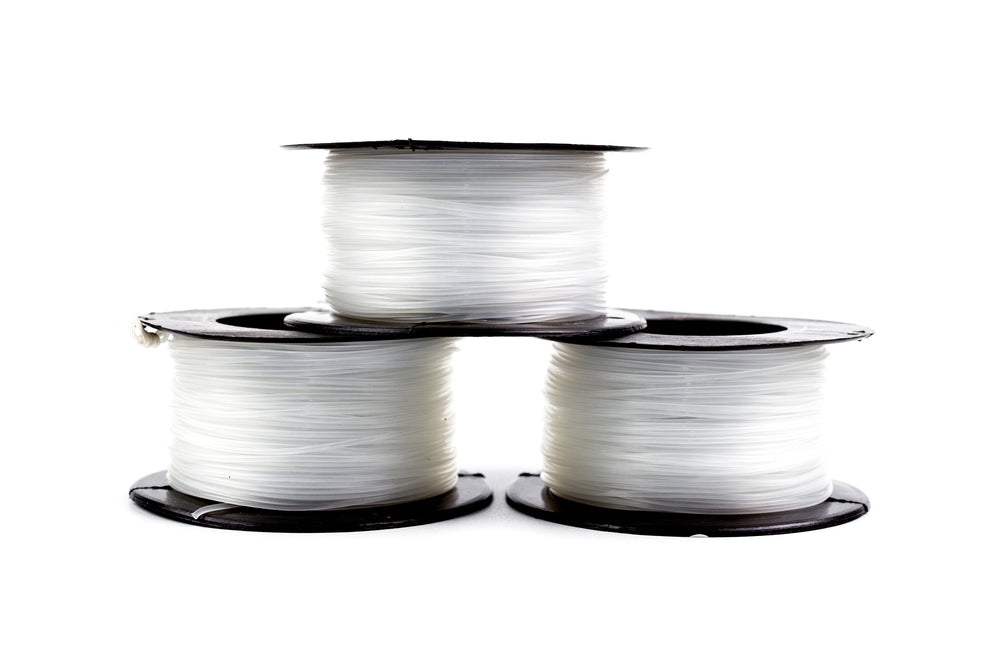The popularity of recreational fishing has skyrocketed in recent years. As more fishing line options have become available, anglers — especially new ones — are left wondering about the differences. In particular, one term that's become increasingly important when choosing lines is "mono equivalent."
Here, we'll explain what mono equivalent means and how knowing the braid diameter compared to the mono diameter can help you make the best choice when buying fishing lines.
What is Monofilament Line?
Monofilament is a fancy way of saying a "single-strand" line, typically made from nylon. Monofilament lines are the most common and affordable option and have been around for nearly a century.
Why use braid over mono?
The reason anglers turn to braid over mono are numerous:
- Modern Braids are made of Ultra High Molecular Weight Polyethylene (UHMWPE) or PE for short; some common brands of UHMWPE are Spectra and Dyneema.
- Braids do not stretch, allowing the angler to feel everything touching the lure or bait. Mono lines can stretch well over 100% causing many bites to be unnoticed.
- Braids are typically 4-6 times smaller in diameter as compared to Mono of the same tensile.
- Braids being smaller in diameter allows the angler to cast further with light lures, giving the angler the opportunity to reach productive spots not available when fishing mono.
- Braids also allow the angler to use lighter reels as the braid diameter will allow for more yardage in smaller volume, at the end of the day your arms will thank you.
- Braids do not develop memory like mono will so they cast without the coiling associated with mono which will slow down your presentation and reduce casting distance.
- Braids do not deteriorate with exposure to UV light thus there is no need to change out braid until it shows obvious signs of wear which takes a lot of casting. Mono must be changed mor often as UV exposure breaks down nylon.
- Braided lines are generally more resistant to abrasions, making fishing easier around rocks, structures, and underwater obstacles.
What braid tensile to use on my reel?
As an example, most braids that are 30-pound test will have a diameter that equates to 8 pound mono, and 20 pound test braid will equate to 6 pound mono. The chart below shows this relationship. You may ask why would I put 20 pound braid on a reel designed to hold 6 pound mono?
Reels are designed to work with lines of a certain diameter to cast properly. A common mistake is to replace mono with braid of the same tensile resulting in a line that is too small in diameter to cast well providing for a bad experience.
Most newer reels will have the capacity stated in both mono and braid tensiles, if not always match the mono equivalent of a braid to manufacturer’s suggested capacity for the comparable mono as in the chart below.
|
Mono Line Capacity |
Braid Line Capacity |
||||
|
Test |
Yards |
Test |
Yards |
||
|
6 LB |
420 |
20 LB |
420 |
||
|
8 LB |
310 |
30 LB |
310 |
||
Why is everyone switching to braid?
Braided lines may not have been the most popular choice in the past, but advancements in science and technology have changed everything.
When choosing a fishing line, understanding the differences between mono and braid size is critical. When they see the mono equivalent diameter on FINS braided fishing lines, anglers can be confident about the superior option.
To get the most out of your favorite pastime, we recommend using FINS braid and Blackfin Rods.


1 comment
Thank you for this post.
However, I am still investigating the “best” lines to use for game fishing (no Mono line used), for 80lb or 130lb reel. Please someone could help me to choose the correct braid line to buy (NB In my mind, it was somewhat material such as Dacron I am going to use, but I don’t knowdhould it be appropriate term for braid) ? Kind regards,
SHARK RESEARCH Opal & Silver Coasts (EU)